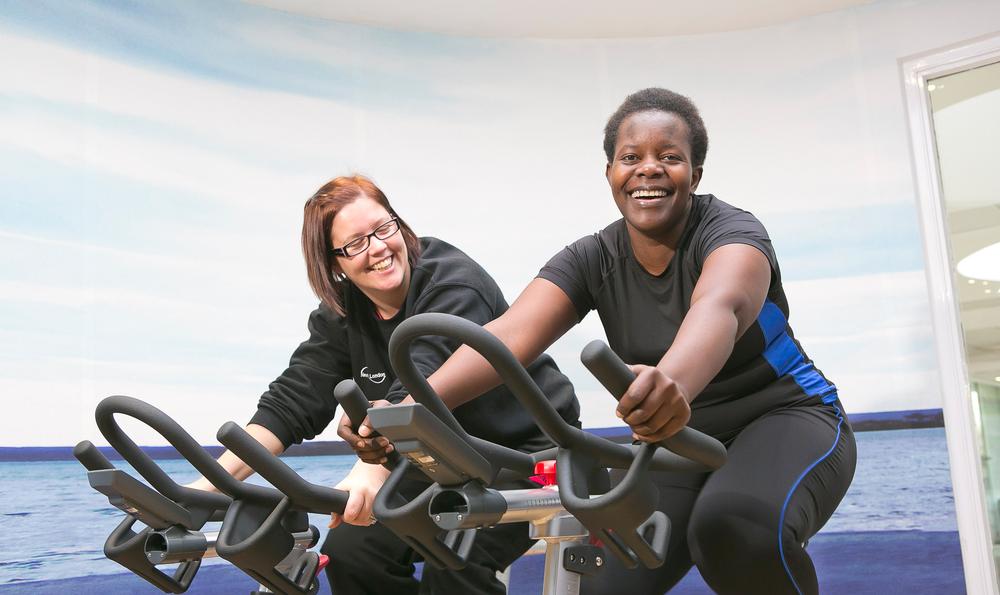The health and fitness sector is being shaped by developments in online, with the emergence of signup and payment collection having a transformational effect.
As well as making membership tracking and collection easier, electronic systems have given consumers more control in managing payments.
COLLECTING FEES
One of the pioneers of web-based systems is Harlands Group, which was among the first to offer clubs the option to take their membership management online.
According to national sales manager, Robin Karn, online solutions have been a game changer: “Online signup is now the dominant way memberships are sold, either on-site or remotely,” he says. “We process more than 1.7m transactions a month and 99 per cent of these signups are made online – a fast, simple and secure process for members – and which also removes the administration of paper contracts for the clubs.”
Joanne Barton, payment specialist at Gladstone Software, says it’s not just membership collection that has benefited from the move to online. Thanks to new tech, the administration of single payment tickets and access is now developing towards a form of customer self-service. “Online payment solutions, self serve kiosks and mobile devices are now preferred to the more traditional method of making payments at a reception point,” Barton says.
“The main benefits for the clubs are cost savings and improved customer service. For users it’s all about convenience and faster service. Self serve kiosks allow users to check in quickly, avoiding queues.”
Sean Maguire, MD at Legend Club Management Systems, agrees – and says new technologies have improved efficiency. “Enabling merchant services online has moved the sign-up process from a purely face-to-face encounter toward a virtual experience,” Maguire says.
“This has allowed operators to adapt how and when they sell to potential customers, increasing sales hours and reducing the number of staff involved. The surge in take-up of smartphones and tablets has also shifted the sales process to prospects on the move, taking full advantage of the trend toward deal-driven impulse purchasing.
Maguire adds that for the consumer, the introduction of online payments means more transparency. “For the prospective member, the availability of online sign-up has forced operators to publish prices and offers providing them with unparalleled insight and choice,” he says.
According to Matt Clements, IT development manager at direct specialist DFC, some operators have come up with their own bespoke systems. “We’re seeing more operators launching apps,” he says.
“Many of our clients have chosen to embed our My Payments online portal into their own app to further reduce friction in the customer journey. This has taken strain off busy facilities that don’t have the time or knowledge to discuss queries, and created an easily accessible platform for them to track payments.”
CASHLESS PAYMENTS
A majority of membership payments are done online and the next step, which some have already taken, is to move all other purchases, including in-club ones, online – in the form of cashless payments.
Access technology using electronic chips is available and can be harnessed to act as a means of payment – with all in-club services and offers booked onto the chip.
In a connected club, members can check in, pay for their food and access the showers. Information terminals can be installed, where members can see in real-time which services have been used, and get a detailed cost overview. Payment is made onto the chip in advance, or when leaving the club.
According to Mario Morger, UK business development manager for Austrian payment specialist Gantner, cashless payments are the future – they can reduce staff costs, increase turnover, enhance safety and enable an easier assessment of revenues.
“Going cashless offers many benefits, such as increased revenue resulting from ease of spending, transparency on transactions and a reduction in theft,” Morger says.
He adds that automated cashless systems can also reduce staff costs and shorten queues, as well as allowing better marketing through accurate customer profiling.
“Allowing your regular club members to be cashless within your facility can boost spend for your ancillary services – such as food and beverage, vending machines and retail,” he says.
“In-club spending has been seen to increase by as much as 40 per cent when a cashless system is introduced, because spending becomes easier and more spontaneous.
ROOM FOR IMPROVEMENT
How well has the sector adopted this new tech?
“If you compare the UK’s leisure industry with other countries’, we’re right up there and use technology well,” says Harlands’ Karm. “But when compared with other industries, we’re lagging behind.
“The low-cost sector is making the best use of it, as they have automated systems. That isn’t always the case with public sector operators.”
When asked to rate how well the UK’s fitness sector is keeping on top of its payment systems, he pulls no punches. “I’d probably give it 4 out of 10,” he says.
























































